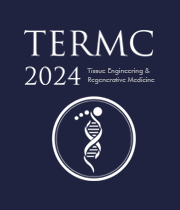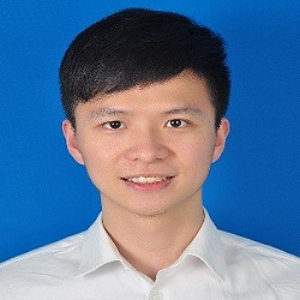Title : Durable immunomodulatory hierarchical patch for rotator cuff repairing
Abstract:
High re-tear rates exceeding 50% in degradable shoulder cuff patches, observed over a five-year follow-up, are attributed to the failure of degradable polymers alone to restore the inflammatory niche post-rotator cuff injury, hindering tendon-bone interface healing. Theoretically, a degradable polymer with durable immunomodulatory functions throughout its degradation procedure might address this issue. In this study, Ferulic acid (FA) was introduced into the repeating unit fragments of polyurethane by skeletal copolymerization to construct a biodegradable polymer (poly(ester- ferulic acid-urethane) urea, PEFUU) with long-lasting anti-inflammatory effects. After verifying the anti-inflammatory function of PEFUU in vitro, hierarchical composite nanofiber patch (HCNP) with sustained anti-inflammatory niche was constructed by electrospinning and lyophilization of decellularized Wharton jelly tissue. The HCNP was used for rotator cuff repairing in rat model. The effectiveness of promoting iRCT repairing by the HCNP was also validated by imaging, histology, and molecular biology methods. Via employing the paradigm of polymer backbone functionalization, a hierarchical composite nanofiber patch (HCNP) distinguished by its enduring immunomodulatory properties, was fabricated, adept at sustaining a protracted anti-inflammatory microenvironment conducive to fostering tissue regeneration. The synthesis process by fabricating (PEFUU) was initiated, wherein FA was incorporated as a bioactive constituent. PEFUU stably releases FA in vitro, reversing the inflammatory niche produced by M1 macrophages and restoring the directed differentiation of stem cells. Subsequently, PEFUU was subjected to the electrospinning process, yielding a bipolar fiber patch characterized by an organized, yet partially random, stratified architecture. Within this stratified architecture, the random layer was strategically imbued with the enzymatic hydrolysate derived from decellularized Wharton jelly tissue (HDWJT). In vitro experimentation demonstrated the propensity of FA to undergo a gradual release profile concomitant with the progressive degradation of the HCNP. In a compelling demonstration of the HCNP's therapeutic prowess, this study extended to an in vivo milieu, employing a rat model of tendon-to-bone injury, manifesting as the restoration of the microstructural continuity inherent to the tendon-to-bone interface, coupled with the establishment of a trinomial distribution of collagen ordering. This study provides an idea for the use of an electrospun nanofiber mat in tissue regeneration. By introducing anti-inflammatory small molecules through copolymerization, the inflammatory niche of the damaged tissue can be altered persistently, effectively inducing tissue regeneration.
Audience Take Away Notes:
- Understanding of Polymer Functionalization for Tissue Regeneration:
- Attendees will learn about the novel approach of incorporating bioactive molecules (Ferulic acid, FA) into the polymer backbone (PEFUU) to create a scaffold with enduring anti-inflammatory properties. This knowledge can be applied to develop new biomaterials with specific functionalities for tissue regeneration.
- Innovative Scaffold Design for Improved Healing:
- The design and synthesis of the hierarchical composite nanofiber patch (HCNP) with sustained anti-inflammatory effects will be discussed. This provides a practical solution for enhancing tendon-to-bone healing, particularly in addressing high re-tear rates in shoulder cuff patches.
- Application in Tissue Engineering and Regenerative Medicine:
- The presentation will demonstrate the application of HCNP in a rat model for rotator cuff repair. This information could be invaluable for faculty and researchers looking to expand their research or teaching scope in tissue engineering and regenerative medicine.
- Impact on Clinical Practice:
- By showcasing the successful in vivo application and the potential for improved healing outcomes, the research could influence clinical practices, offering a more efficient and effective approach to tissue repair and regeneration.
- Design and Research Methodology:
- The methodology used in fabricating the HCNP, including electrospinning and lyophilization processes, provides new information and techniques that can assist in solving complex design problems in biomedical engineering.


